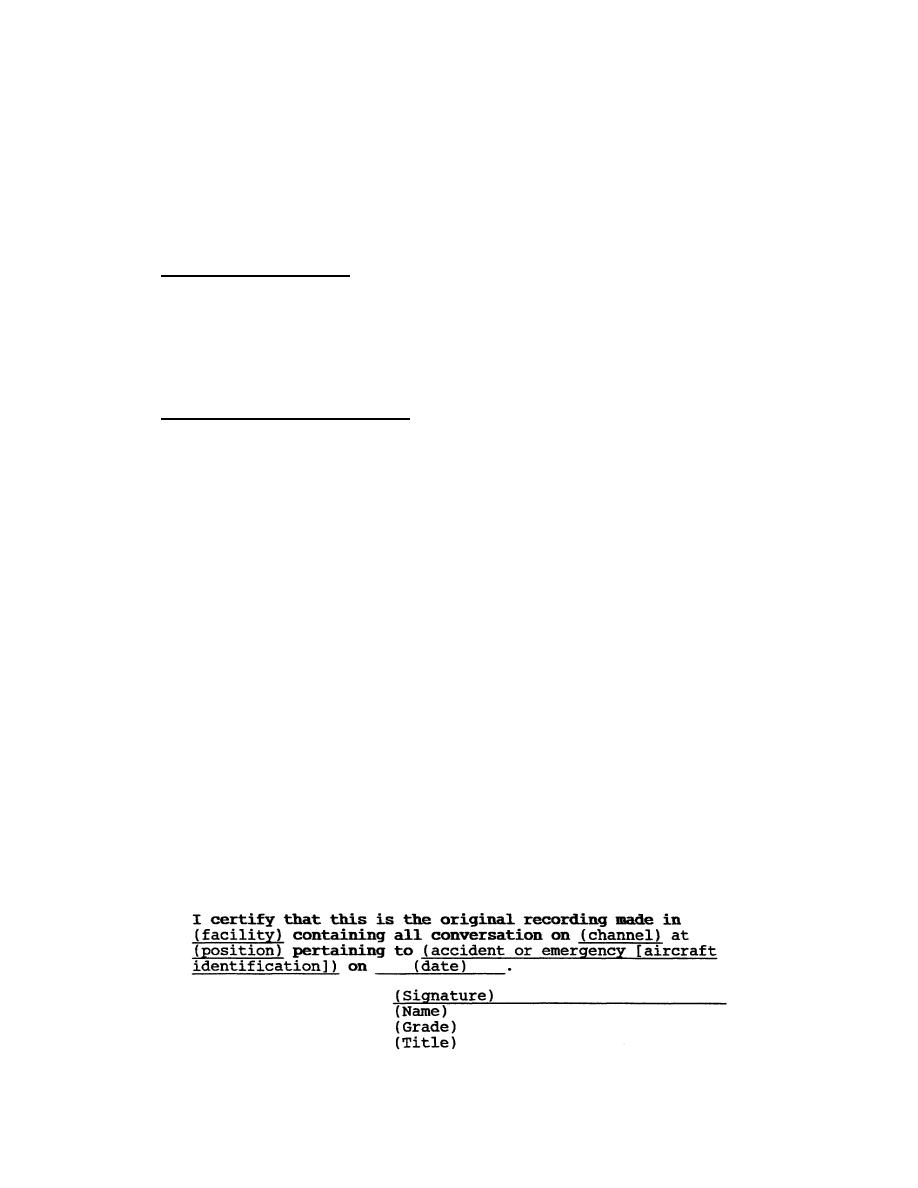
b. Because of the many different types of facilities and
equipment, fixed procedures that would suit every facility are
impossible to mandate.
Therefore, the facility chief establishes
procedures that define the responsibilities of each position during
an emergency.
These procedures shall be published in the facility
training manual.
5.
TAPE RECORDINGS
a. Custodial Control.
The ATC or facility chief has
custodial
responsibility for tape recordings made on equipment
that is
furnished or maintained by the Army. When another service
or agency
has custodial responsibility for the recorder tapes, a
letter of
agreement shall be initiated identifying access and
retention
policies and procedures.
b. Handling Recorder Tapes.
(1) Tapes containing normal day-to-day traffic information
shall be retained for a minimum of 15 days. They are then erased and
returned to service. Any tape may be used for training after it has
been retained for the required amount of time.
Normally, the post
audiovisual branch or a similar facility has equipment that will
erase, clean, and splice nicks in tapes; whenever possible, use these
facilities.
Cleaning and splicing nicks increases the quality and
life of the tapes.
(2) Tapes
containing
emergency
or
alleged
violation
information shall be retained for 30 days.
An identification and
certification statement shall be attached as outlined in (3) below.
If at the end of 30 days no verbal or written request for these tapes
is received, they may be returned to service.
If a request is
received
concerning
an
emergency
or
alleged
violation,
tape
recordings of the emergency or violation shall be handled the same as
a tape concerning an accident as defined in (3) below.
(3) Tapes containing accident information shall be retained
for a minimum of six months. They will be removed from the recorder
as soon as possible, identified, and certified using the following
statement:
40
AV1959


 Previous Page
Previous Page
